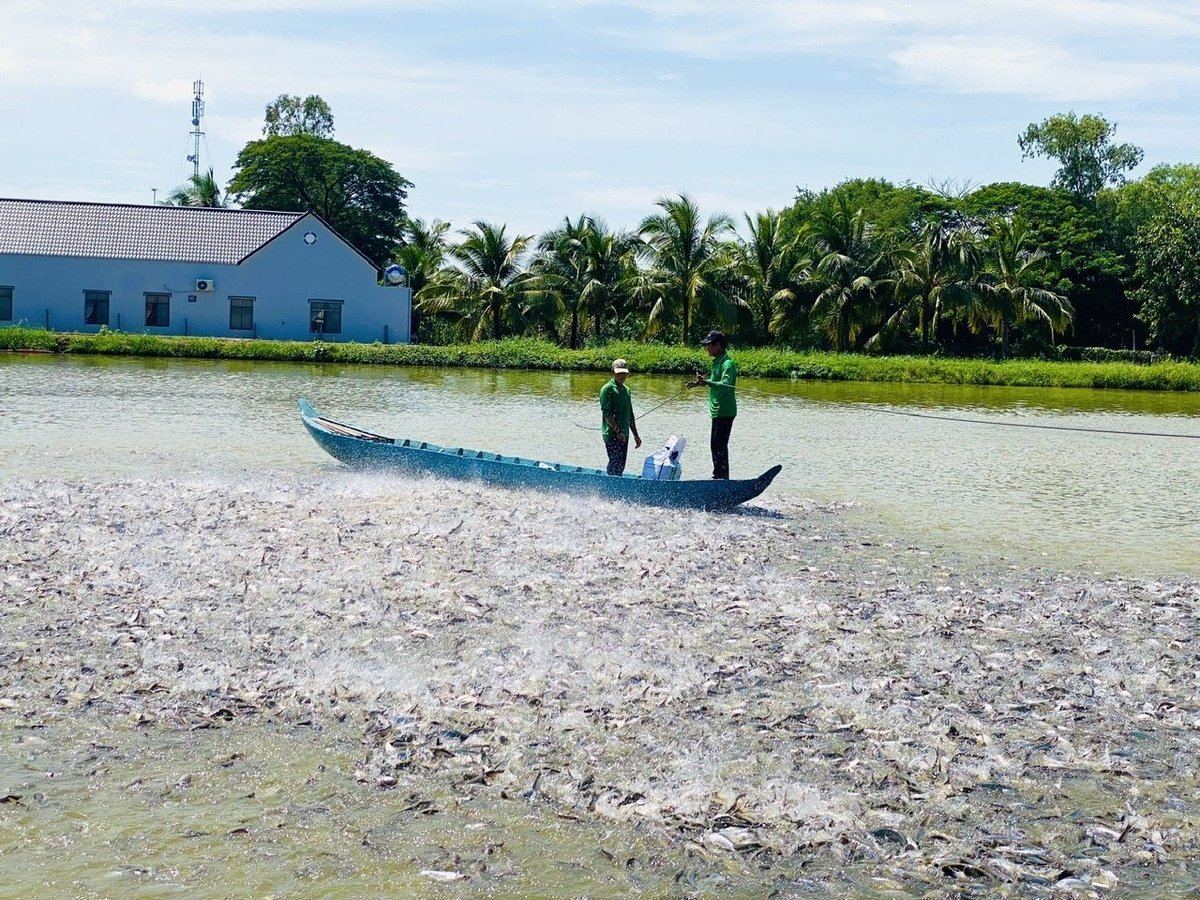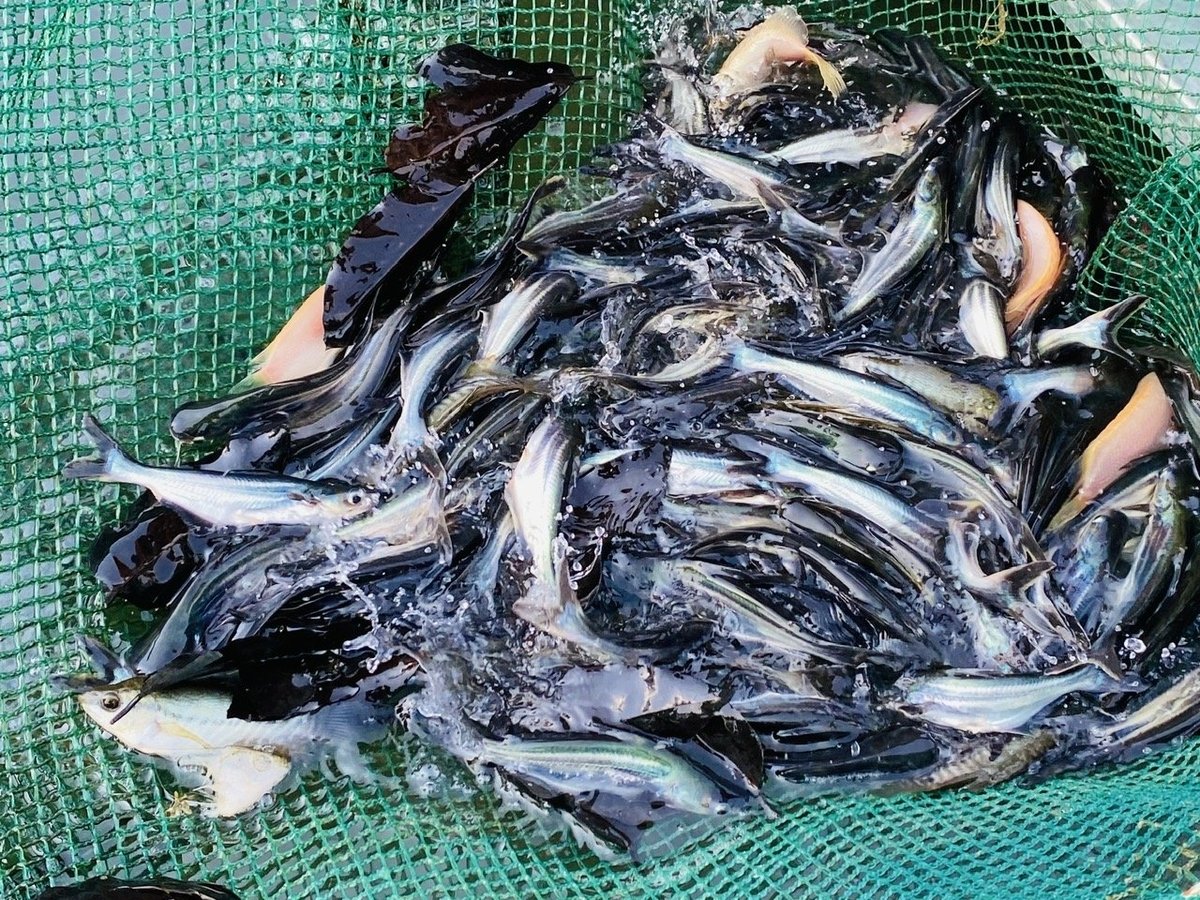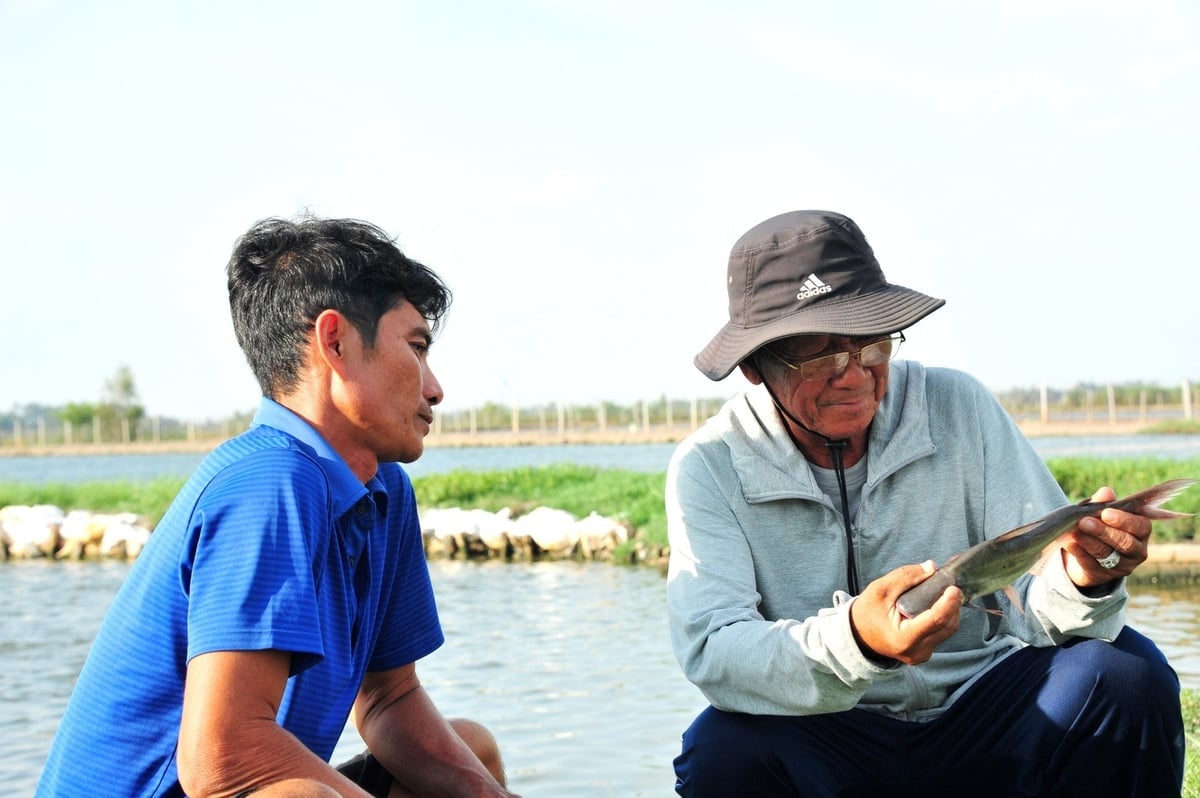December 23, 2025 | 23:11 GMT +7
December 23, 2025 | 23:11 GMT +7
Hotline: 0913.378.918
December 23, 2025 | 23:11 GMT +7
Hotline: 0913.378.918

By 2025, Dong Thap province is expected to have a pangasius farming area of approximately 2,630 ha with an output of 540,000 tons. Photo: Le Hoang Vu.
As the “capital” of the pangasius industry in the country, Dong Thap province is gradually improving the quality of fish breeds and practicing safe and sustainable fish farming. Behind each exported pangasius bringing billions of dollars is a series of strict processes, from veterinary work to quarantine, vaccination, and environmental monitoring, all to ensure the fish are disease-free from farm to table.
According to Huynh Tat Dat, Deputy Director of Dong Thap Department of Agriculture and Environment, in 2025, the province’s total pangasius farming area is estimated at 2,630 ha with an output of up to 540,000 tons.
To ensure fish products meet export standards, the selection and care of fish seed is a top priority. The province currently has 52 facilities for breeding pangasius seed, resulting in a broodstock of approximately 150,000 fish plus an annual supply of 18 billion pangasius fry and more than 1.3 billion pangasius larvae.
One thing to note is that in 2024, more than 4.4 million fish fry were vaccinated against two dangerous diseases: hepatopancreatic necrosis and viral hemorrhagic septicemia. This is a great effort in veterinary work, demonstrating a thorough investment to minimize disease risks right from the input stage.
Water environment monitoring is carried out periodically, twice a month, at 45 locations in the province. The inspection criteria include water quality, bacteria, heavy metals, and pesticide residues to ensure that the environment for raising pangasius fish meets biosafety standards.
Dong Thap province also cooperates with the Research Institute for Aquaculture II to select and provide genetically improved broodstock. In the fourth quarter of 2024, 14 pangasius breeding facilities received 8,600 fourth-generation reserve fish with a fast growth rate and good disease resistance as a foundation for high-quality seed production.

Dong Thap province currently has 52 facilities for breeding pangasius fry, with a broodstock of about 150,000 fish, an annual supply of 18 billion pangasius fry and more than 1.3 billion pangasius larvae. Photo: Le Hoang Vu.
“In the past, we used to raise pangasius mainly based on experience, and only when the fish got sick did we report to the veterinary staff. Now it’s different. For each batch, we are instructed to take samples for testing, monitor the pond water periodically, and even vaccinate the fish. It takes a lot of effort at first, but later on, we can rest assured because it helps lessen the loss. The fish grow quickly, and sell for a high price,” says Nguyen Van Hung, a pangasius farmer in Chau Thanh district.
The production linkage model between breeding facilities and commercial pangasius farming enterprises has been firmly established in Dong Thap. Since the beginning of the year, 38 breeding facilities have linked up with 25 hatchery facilities, producing 4 billion pangasius fry and providing 100 million fingerlings for commercial farming areas.
Signing a contract valid for up to 12 months between the parties helps ensure stability in price, breed specifications, deformity rate and warranty responsibility after stocking. This is an important basis to help pangasius meet traceability requirements and ensure food safety when exporting.

Behind each exported pangasius bringing billions of dollars is a series of strict processes, from veterinary work to quarantine, vaccination, and environmental monitoring. Photo: Le Hoang Vu.
According to Le Thi Hong Nhung, Head of Export Department - Dong Thap Seafood Processing Export Joint Stock Company, international customers are taking a keen interest in traceability. “They want to know where this fish is raised, what vaccine it has received, and whether any diseases have been detected. Thanks to the province's veterinary system, which is strict from breeding to harvesting, we are confident in promoting clean, standard fish to demanding markets.”
Information from Huynh Tat Dat, Deputy Director of Dong Thap Department of Agriculture and Environment, shows that this province is preparing for the medium-term public investment period of 2025 - 2030 with the project "Linking the production of high-quality pangasius fry" on a scale of 469 ha in the districts of Cao Lanh, Tan Hong, Lap Vo, Chau Thanh and Hong Ngu city. The project aims to complete the infrastructure for 4 concentrated seed production areas, ensuring the strictest technical and biological conditions to serve the sustainable development of the pangasius industry.
Translated by Samuel Pham

(VAN) From changing soil management practices to reducing input use, many pepper farms in Lam Dong are showing clear results toward low-carbon production.

(VAN) In 2025, An Giang's agriculture achieved positive results, highlighted by stable rice production and the effective implementation of the 'One Million Hectares of High-Quality, Low-Emission Rice' project.

(VAN) Private sector will be a powerful force for investment and innovation to share solutions for nature conservation and biodiversity restoration.
/2025/12/18/4844-4-223614_595.jpg)
(VAN) Building on the 'Large-Scale Rice Field' project, An Giang is developing high-quality rice raw material zones, strengthening consumption linkages, and standardizing processes to meet market requirements.

(VAN) With support from KOICA, livestock sector is developing the regulatory framework for management based on South Korea’s experience.
/2025/12/17/0042-2-075234_14.jpg)
(VAN) In Vinh Long, high-quality, low-emission rice models are being scaled up from cooperatives, helping reduce production costs, increase farmers' incomes, and protect the environment.

Professor Nguyen Duc Ngu, the third generation of leaders since the establishment of Vietnam’s Hydrometeorology sector has witnessed and lived through the long arc of its development.